Nothing in life is certain, but there are a few things that are set in stone. You can’t break the laws of physics, for example, and while you can enjoy pineapple on pizza, you best do it in secret, lest you anger the horde of self-proclaimed Italian flatbread purists.
Here’s another absolute – the BMW 5 Series is the benchmark to which all executive sedans are measured. While Munich is better known for its smaller, more athletic sports sedans, the 5er is often where the company does its best work. The reverence that enthusiasts have towards the landmark E39, which defined a generation of big four-doors, remains to this day.
The current G30 model bolstered the 5 Series’ leading position, offering a rare depth of ability even in this exalted segment. Equipped with a range of smooth and powerful engines and posessing both a cossetting ride and taut handling, it made mincemeat of the opposition – even if it was a little boring to look at.
But there’s a new rival on the scene, specifically from Stuttgart – the facelifted W213 Mercedes-Benz E-Class. To keep the 5 Series on the bleeding edge, BMW has given the car its own nip and tuck, so another drive is needed to assess the competitive order. Is it still at the top? Well, I’ll tell you right now – having honed the business sedan formula to a fine edge, BMW continues to deliver an absolute masterclass.
Competitively priced, although rivals are cheaper
The facelifted G30 5 Series went on sale in Malaysia in May, exactly a year after the refresh (Life Cycle Impulse or LCI in BMW-speak) was revealed globally. It is available in two variants – the 530e plug-in hybrid, which still benefits from the government’s import and excise duty reductions, as well as the petrol-powered 530i. As before, both models are assembled locally at Inokom’s Kulim plant in Kedah.
At face value, the BMWs undercut the equivalent E-Class models – the E 200 Avantgarde and E 300 AMG Line – by a slim margin. However, the Bavarian cars only come with a two-year warranty as standard, compared to the Mercedeses’ four; add a five-year warranty and service package to the Bimmers and it’s advantage Stuttgart. While the 530e ostensibly competes with the E 200 at the entry level, its true rival is the similarly-priced Volvo S90 Recharge T8, the only other hybrid model left in the segment.
Unsullied good looks on both variants
The G30 5 Series is one of the more handsome cars in BMW’s lineup, created before the company’s ongoing obsession with massive grilles and fussy detailing. Munich has wisely treated the facelift with restraint, freshening up the car with a more angular front end that features slightly wider double kidneys, although the height of those openings has thankfully remained unchanged.
Sharper headlights flank the grilles, while the taillights get a new three-dimensional design with C-shaped light guides and black frames that give the 5 Series a more modern look. The front and rear bumpers have also been re-profiled, completing the redesign.



To the uninitiated, the 530e and 530i look nigh-on identical from the outside. Both come with the M Sport exterior package consisting of a U-shaped front bumper design, larger air intakes, a grey rear bumper insert, twin trapezoidal exhaust finishers and a smattering of M badges. They also ride on the same 19-inch two-tone alloy wheels with a very pleasing Y-spoke design.
The headlights also appear to be identical at first glance, incorporating three-dimensional L-shaped daytime running lights. Both are upgraded over the standard units – the 530e gets adaptive LED headlights, while the 530i gains the range-topping Laserlight items, distinguished by the blue “eyebrows”.
Lastly, the 530e has a slightly taller ride height compared to the 530i, despite both being fitted with adaptive dampers. That’s because the latter comes with a sportier M Sport setup with lowering springs, which are not available on the plug-in hybrid even as an option in other markets. Despite this, the 530e empathically does not look like the lesser of the two cars, quite unlike the strategy taken by Mercedes-Benz Malaysia – the bargain-basement E 200 is very much the poorer cousin of the E 300 on the outside.
Business-like interior remains a paragon of usability
The similarities between the two variants continue on the inside, where the 5 Series is mostly unchanged. It’s a shame that the G30 retains the old BMW cabin design, which looks a little dated next to the geometric cockpits of newer models. A comprehensive makeover, similar to what the facelifted X3 and X4 have gone through, would’ve worked wonders here.


As it stands, the 5 Series’ no-nonsense interior doesn’t have the panache of rivals like the E-Class, which wows its occupants with its swoopy design, enormous widescreen display panel and a seemingly unlimited range of ambient lighting colours (the BMW has a paltry 11). But if you’re looking for outright usability over flash, it’s the Munich camp that will win you over.
Every single piece of switchgear is laid out exactly where it’s supposed to, and whereas Mercedes has been messing around with capacitive touch controls, BMW has stuck with physical buttons – and the car is all the better for it. Want to change the volume on the steering wheel? In the E-Class, you’ll be fumbling around with unregistered taps and accidental presses. In the 5 Series, it’s a single click.
The BMW also has the edge in terms of infotainment. Both cars come with the latest systems and touch displays, but the 5 Series retains the brilliant iDrive rotary controller, making it far easier to get around the interface while driving. The layout of the BMW Operating System 7.0 is also slightly more intuitive than the Mercedes-Benz User Experience (MBUX), helped by the LCI’s larger 12.3-inch centre display.
One downside is the lack of standard-fit Apple CarPlay and Android Auto compatibility, which is a glaring omission at this price. Of course, you can purchase the functionality – which comes with wireless connectivity – via the ConnectedDrive Store, but it costs a not-insignificant RM1,299.
At least you get Qi wireless charging as standard on both cars. Combine it with the smartphone Digital Key (iPhone only for now) and wireless CarPlay and you’ll be able to unlock and start your car, charge your phone and get plumbed in to the infotainment system – all without using a physical key or a cable.
Again, the 530e and 530i get a similarly appointed on the inside, receiving a thick M Sport steering wheel, alloy pedals, aluminium trim and real Vernasca leather. However, the 530i benefits from a head-up display and a large (non-panoramic) sunroof. The latter does result in a rather strange bulge in the headlining where the rear map lights are located, although it doesn’t impact headroom.
Supportive seats, top-notch stereo
Both 5 Series models come with power-adjustable sports seats, which have been redesigned for greater comfort and deserve special mention here. My colleagues said they’d have preferred the pews to be softer and more cosseting, and most buyers in this segment would probably agree.
But I appreciate the extra support on offer, especially the body-hugging adjustable bolstering – as opposed to the E-Class, whose flat seats had me rolling about in the cabin even when taking corners at moderate speeds. It’s something you don’t notice until it’s gone.



Also excellent is the Harman Kardon sound system fitted to the 530i. The 464-watt output may seem puny compared to the four figures being put out these days, but its 16 speakers impress with their supreme clarity, punchy bass and spacious surround sound effect. If this is what the mid-range setup is like, how on earth does the Bowers & Wilkins option (not available in Malaysia) sound?
Roomy, but less plush than rivals
The 5 Series has always been a sizeable car, but the latest model is now massive, and it feels it on the road. The upshot is that the cabin offers no shortage of room for occupants both at the front and rear of the vehicle. The rear seats may not be as cushy or as reclined as they are in the E-Class, but the BMW counters by offering four-zone climate control as standard, instead of the maximum of three zones in the Mercedes.
It’s in the boot where the 5 Series trails the E-Class. The 530i’s 530 litres of cargo space measures just 10 litres smaller than the Mercedes, but the oddly stepped sides make it a little awkward to fit larger items. The 530e’s underfloor battery pack results in a much more severe transverse step and a far shallower 410 litre boot, although the ingenious dual-position floor does at least mean you can have a flat load bay.
Adequate if not outstanding safety
The days of BMW offering subpar safety equipment are long gone. Both 5 Series models come with the bare minimum of autonomous emergency braking as part of the Driving Assistant package, which also includes lane keeping assist and blind spot monitoring.


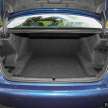
The 530i adds adaptive cruise control with stop and go, which works well by virtue of it being able to detect up to two cars ahead – although it is a little jerky at lower speeds. It should be pointed out, however, that neither variant comes with full Level 2 semi-autonomous driving capability (they’re missing out on lane centring assist), which is a shame given rivals the E 300, S90 and Lexus ES all have it.
World-class powertrains, no matter the variant
The G30’s intrinsic mechanical excellence comes to the fore the moment you set off. It took just a few kilometres in the 530i for me to realise that this is what an executive sedan should feel like – so much so that I had to text my colleagues about how good the car was as soon as I got home.
It all starts with the engine. Both the 530e and 530i are powered by the same B48 2.0 litre turbocharged petrol four-cylinder, which in the plug-in hybrid produces 184 PS from 5,000 to 6,500 rpm and 300 Nm of torque between 1,350 and 4,000 rpm. It’s mated to a ZF eight-speed automatic gearbox and a 50 kW (68 PS) electric motor to deliver a total system output of 252 PS and 420 Nm, the same as the pre-facelifted model.
Now, however, there’s a (terribly-named) XtraBoost function that adds an extra 30 kW (41 PS) from the electric motor. For up to ten seconds, you have a car capable of putting out an impressive 292 PS. You can access this reserve by either putting the car in a dedicated XtraBoost drive mode, flooring the throttle past the kickdown button or flicking the gearlever into the M/S position.
The 530i dispenses with the electric gubbins, instead getting an uprated engine that pushes out a respectable 252 PS from 5,200 to 6,500 rpm and 350 Nm of torque between 1,450 and 4,800 rpm. Both models come with rear-wheel drive and ZF’s ubiquitous eight-speed automatic transmission (the 530e ditches the torque converter to fit the electric motor) as standard.
Munich has been utilising the same basic engine and gearbox setup for a decade now and its mastery shows. No matter which model you plump for, this forced-induction mill is a smooth operator, delivering linear, predictable power throughout the rev range and only becoming slightly breathless towards the top.
Plug-in hybrid delivers pace in spades
Of the two, it’s the 530e that feels faster out the gate, the electric motor helping to augment the engine’s already mighty low-end torque. Call for the car’s wealth of performance and you get a solid shove in the back as this two-tonne sedan flings itself to the highway speed limit with ridiculous ease – as the 5.9-second zero-to-100 km/h sprint time will attest to. Not quite as quick as the 407 hp S90 T8 (which takes a whole second out of the BMW’s figure), but it hardly matters at this point.
In hybrid mode, the car spends most of its time running on pure electric power, where it feels the happiest. A milk float this isn’t – the motor is plenty powerful enough to keep up with traffic thanks to its masses of torque from zero rpm. The transition between electric and petrol motivation is largely seamless, the car deftly juggling the operation of the two power sources in a smooth manner.
It’s only with abrupt throttle applications – say, when you’re cruising along in electric mode and suddenly mash the pedal – do you catch it unawares, the four-pot taking a second or so to fire up before kicking you in the backside. That’s not a problem in the Sport and XtraBoost modes, which keep the engine running at all times for instant acceleration at all speeds.
Punchy, easygoing petrol engine; smooth but slightly recalcitrant automatic
Next to the 530e’s wall of torque, the 530i has a finite amount of performance that takes a while to build, and it feels a little sluggish as a result – it hits the tonne a half-second slower at 6.4 seconds. On its own, however, the car is no slouch, despite the efficiency-biased tuning of the gearbox.
In Comfort mode, the ZF unit hangs on to too high a ratio for a given speed and requires a heavy foot to get it to shift down (although the downshift itself comes quickly and smoothly, so it’s no real hardship). Sport mode gives the ‘box a shot of espresso, making it faster to respond and revealing the 530i’s true turn of speed.
It’s an even better experience if you take the reins yourself – nudge the gearlever to the right and you get full manual control with the paddle shifters, enjoying snappy gear changes with each press. Pay close attention to the reverse-direction rev counter, however: the engine is so hushed (even with the fake noises in Sport mode) that you’ll hardly be able to hear it as it hits the redline.
Impressive efficiency on either petrol or hybrid power
You likely won’t be disappointed by the fuel efficiency of these cars, especially given the performance on tap. Across a single weekend over a mix of different driving conditions, we managed to average 7.2 litres per 100 km with the 530i, which is not too far off the official consumption figure of 6.7 litres per 100 km and nearly on par with the new Proton Iriz Active with less than half the power.
That said, you won’t get anywhere near this number if you’re particularly lead-footed, so be prepared to hit double digits if you’re not careful. As for the 530e, I achieved 5.8 litres per 100 km, which is a remarkable achievement – if a ways away from the claimed 2.3 litres per 100 km.
Bear in mind, however, that this figure takes into account quite a bit of high-performance testing and a few longer-distance drives – including a trip to the Sepang International Circuit to cover the Toyota Gazoo Racing Festival last month. If your commutes are shorter and you are able to charge your car every day, you can certainly go much lower than what we achieved. And if you don’t plan on charging the 530e at all, then stop reading, do us all a favour and buy the 530i instead. It’s for all our sakes.
Usable real-world electric range, but nowhere near as claimed
The 530e’s electric motor is juiced by a 12 kWh lithium-ion battery, which is significantly larger than the 9.2 kWh unit found in the pre-facelifted model. The claimed all-electric range is 67 km, which is nigh-on impossible to achieve unless you drive everywhere with all the urgency of that sloth from Zootopia.
A more realistic range of around 40 km is possible if you’re gentle on the throttle, but the addictive thrust of the electric motor means even hitting that number will be a bit of a stretch. What remains, however, is still a useful figure and enough to ensure that the vast majority of urban journeys can be completed without ever having to wake the petrol engine. This is the key to the 530e’s stellar efficiency.
Unfortunately, with a bigger battery comes a longer charge time. Munich claims a charge time of six hours using a 230-volt household socket (our sockets are rated at 240 volts), but in my experience, it took upwards of ten hours to fill up the battery, which is still very much doable overnight. You can install a wallbox to make it faster, although AC power is capped at 3.7 kW. The claimed charging time is 3.6 hours using this method.
Ride and refinement knows no equal
Cruising comfort hasn’t always been a strong suit of BMW’s, as owners of the uncouth F30 3 Series will readily admit. That issue has never afflicted the G30, which has been at the top of its game ever since it made its debut back in 2016. Despite little being changed mechanically, driving the latest model shows just how much of a lead the car still has over its competition.
Aside from the barely audible engine noise (make that zero engine noise in the 530e), the 5 Series also isolates the occupants from wind noise at most speeds, while the switch to Bridgestone Turanza touring tyres – from the outgoing Goodyear Eagle F1 ultra-high-performance rollers – has brought an appreciable reduction in road roar. This is a sublime car to travel long distances in.
That impression is further bolstered by the sheer quality of the ride. Adaptive dampers come as standard and they lay bare BMW’s core competency in chassis tuning. Slight low-speed firmness aside, the 5 Series swallows speed bumps and potholes whole while also maintaining a flat ride over larger undulations. Even against the improved (passive) dampers on the E-Class, there is simply no contest.
You do feel the extra stiffness of the 530i’s M suspension, but the trade-off is slightly better body control in the corners. Even in Sport mode, the 5 Series remains eminently comfortable and entirely useable day-to-day. One thing to note, however – both variants have the tendency to porpoise over choppy roads at higher speeds. This is by no means a deal-breaker and is easily quelled by putting the car in Sport mode, but it’s still something you should bear in mind. Other than that, the BMW is beyond reproach on broken tarmac.
Surefooted handling let down by tyre switch
As expected, the 5 Series maintains its advantage in the corners, although the gap has narrowed somewhat. That is through no fault of the car itself, which remains adept at going down a clear, twisty road. The steering ratio is commensurate with the BMW’s considerable length, which is to say that the rack is precise but not especially fast or feelsome – the 5er never feels as nimble as the Ultimate Driving Machines of yore.
Still, it makes light work of the bends, helped by the linear weighting of the rim, gradual body roll (tightened still further on the 530i) and excellent bump absorption. The extra weight of the 530e’s battery does dull its responses a touch, but it continues to be a confident steer.
One area where the LCI model lets the side down is in outright grip. With the change to more pedestrian tyres, the G30 exhibits a bit more understeer than before, losing the previous car’s sweet handling balance. This is especially evident in the 530e, the extra mass of which increases its tendency to push when it reaches its limits. Even so, BMW has earned its keep in the corners – but only just.
Verdict: Still head and shoulders above the competition
It may seem like I am waxing lyrical over the new 5 Series, but be in no doubt as to its excellence. Five years on, it remains a near-faultless machine that deftly blends pace, comfort and verve in an attractive package. Some of the car’s rivals hold more showroom appeal with their flashier designs and fancier features, but the BMW shows them a clean pair of heels where it matters – out on the road.
Whether you’re after a serene chauffeur-driven vehicle or are looking to get behind the wheel yourself, the 5 Series covers all the bases. As one of only two remaining hybrid executive sedans on the market, the 530e adds an extra dimension with its efficient part-electric powertrain and ruthless acceleration, although that comes at the cost of serviceability and long-term resale value.
Yes, the 5 Series could be a little better equipped in the safety department, especially given the prices. Even so, you can’t go wrong with choosing either of these executive sedans, which are still the high water mark for the segment. We’ve met the new boss, and it’s exactly the same as the old boss.
The facelifted BMW 5 Series is priced at RM317,534 for the 530e M Sport and RM368,122 for the 530i M Sport. That’s with the sales and service tax (SST) exemption and the standard two-year warranty; opt for the five-year warranty and service package and those figures go up to RM334,354 and RM384,942 respectively. Browse full specifications and equipment on CarBase.my.










GALLERY: 2021 BMW 530e M Sport 




















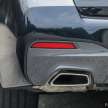




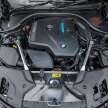









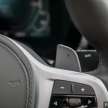
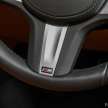








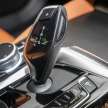








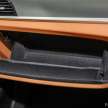






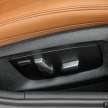


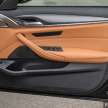














GALLERY: 2021 BMW 530i M Sport 





































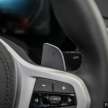
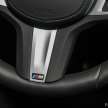





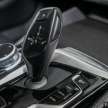











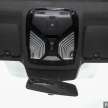

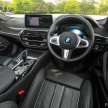




















The post REVIEW: 2021 BMW 5 Series in Malaysia – G30 LCI 530e and 530i M Sport, priced from RM318k to RM368k appeared first on Paul Tan's Automotive News.

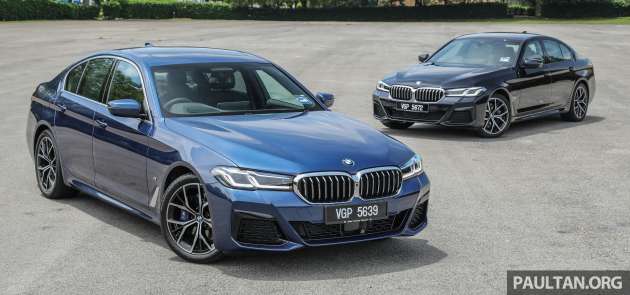
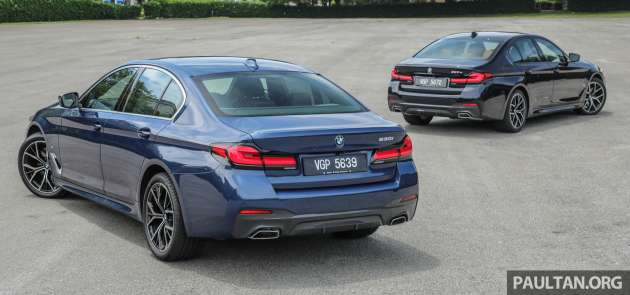
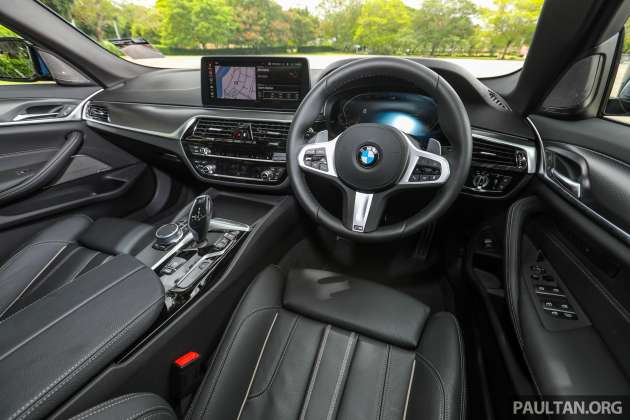

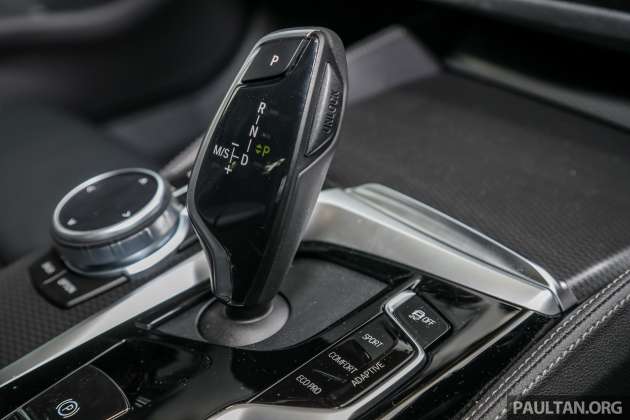
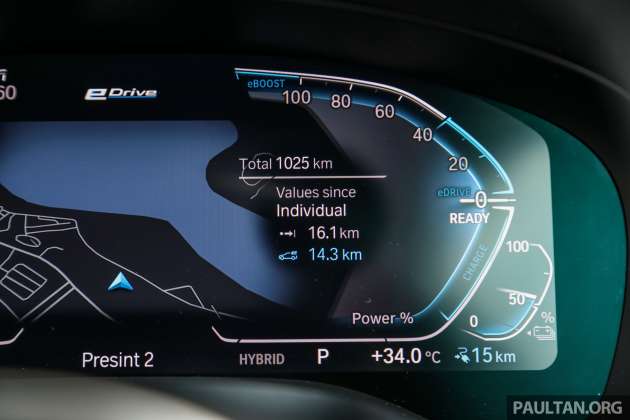
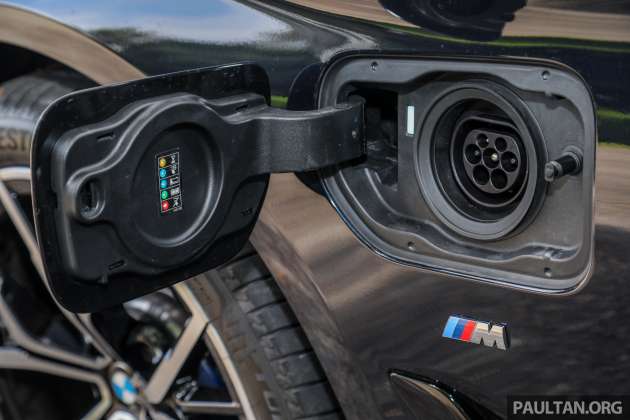

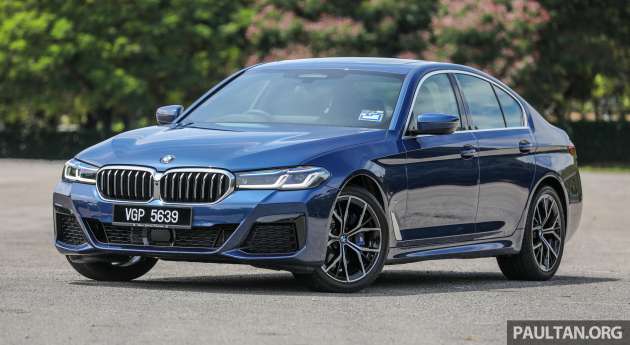
0 Comments